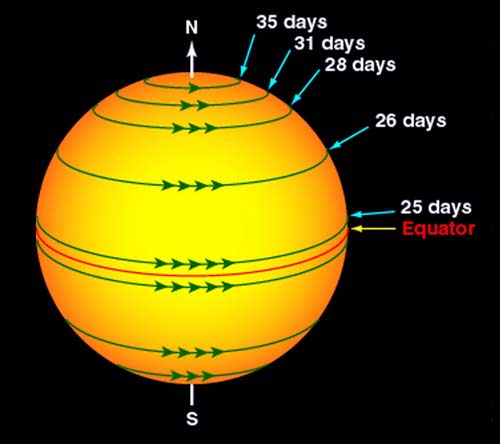differential rotation

Since the Sun is a ball of ionized gas, it does not have to rotate rigidly like the solid planets and moons do. In fact, the Sun's equatorial regions rotate faster (taking only about 24 days) than the polar regions (which rotate once in more than 30 days). The source of this differential rotation is an area of current research in solar astronomy. Credit: NASA.
In astronomical contexts, differential rotation may mean:
The variable rotation rate of a gassy body, such as a star or gas giant planet, with latitude; gas near the equator spins around faster than gas near the poles.
The variable rotation in a disk-shaped structure, such as a galaxy, according to distance from its center. Stars near the center take less time to complete one rotation than those further away.


